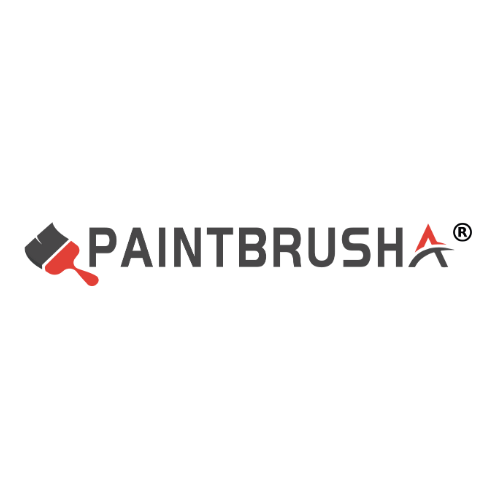When it comes to painting, everyone wants a smooth, flawless finish. So, what is the best paintbrush for achieving this look? Some might say that a foam brush is the best option, while others might swear by a brush with natural bristles. There is no perfect brush for a smooth finish – it depends on the type of paint you are using, the surface you are painting, and your personal preferences.
If you’re painting a small area, you might be able to use a regular house paintbrush. Still, if you’re doing larger projects or applying multiple coats, it’s best to use a high-quality brush to help you achieve smooth results without getting any lumps or bumps along the way. In this guide, we’ll explore all three types of brushes (natural bristle brushes, synthetic brushes, and combination brushes) so that by the end of it, your next project will look like it was painted by a professional painter—not a beginner!

Natural bristle paintbrushes
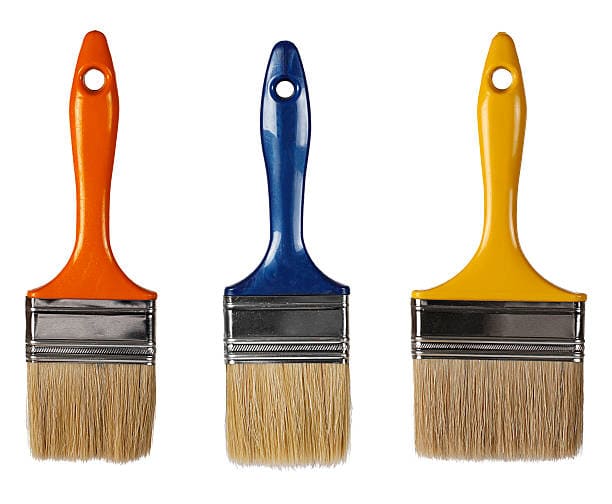
Natural bristle paintbrushes
Natural hair paintbrushes are made from animal hair, such as pigs. These brushes are soft and absorbent, holding more liquid than synthetic brushes. They’re used for oil and acrylic paints.
The advantage of natural hair brushes is that they allow artists to work with wet materials, such as watercolour or acrylics, on the same piece while retaining a consistent stroke. This allows you to blend colours quickly while maintaining a smooth paint application onto your canvas. Natural bristle brushes can be used for fine detail work because they have more flexibility than synthetic bristles.
Synthetic paint brushes
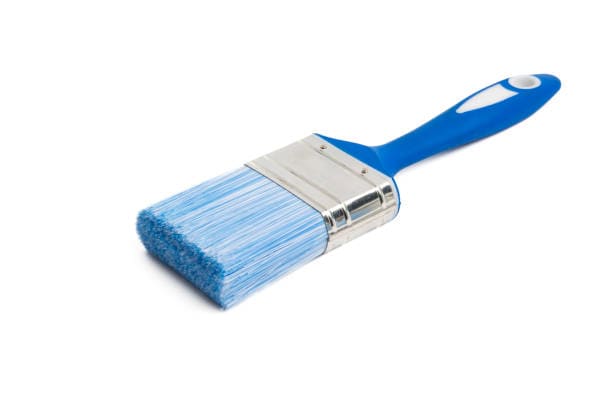
Synthetic brushes are made of plastic or nylon and are cheaper than natural bristle brushes. They’re easier to clean, more durable, and scratch resistant. They also come in various shapes and sizes—a good option if you want to experiment with different types on your walls.
Brushes with a combination of natural and synthetic fibres
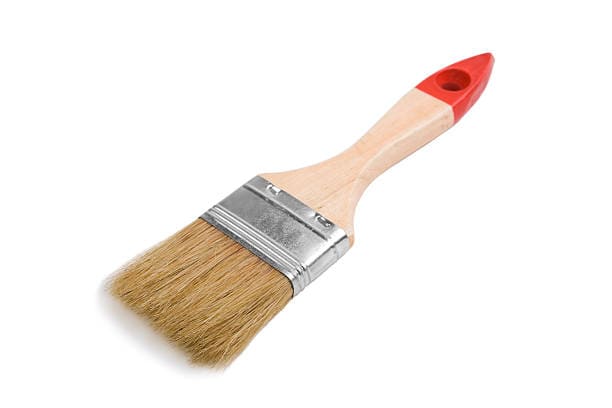
If you are using water-based paint, then use natural fibres. These brushes will be able to hold more water, so they won’t soak up your paint and make it runny. Natural fibres are also softer than synthetic ones, which means that when you’re using them with oil-based paint, they don’t absorb as much of the oil (and therefore leave less of the smell behind).
If you want to use acrylics or lacquers with your brush, then opt for a combination of natural and synthetic fibres—the former will allow you to control the amount of liquid easier than if you were using one kind alone. At the same time, the latter can retain more pigment than its natural counterpart because it doesn’t absorb as much liquid from what’s underneath.
You should know what kind of paintbrush you should be using.

Whether you’re painting a wall or a piece of furniture, different paint brushes will work best depending on the type of paint you’re using. If you’re using an oil-based paint, natural hair brushes are your best bet. These brushes hold more wetness and allow smooth control over your strokes. Synthetic brushes are better suited for water-based paints because they allow for more even liquid distribution on a surface. The best combination would be to use both types in one project; this gives you an extra layer of protection against uneven strokes while still allowing some control when applying thick coats to specific areas.
How to clean paintbrushes
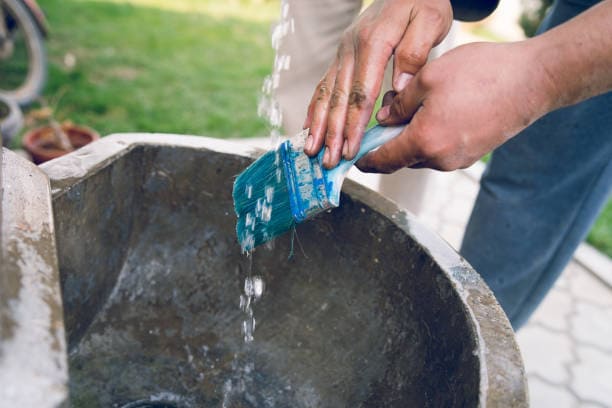
When the paint on your brush starts to dry and get thick, it’s time to clean it. A dirty brush will lead to you having streaks and smudges in your painting. You can clean your brushes with soap, water, paper towels, or just soap and water alone.
Which brushes are you cleaning
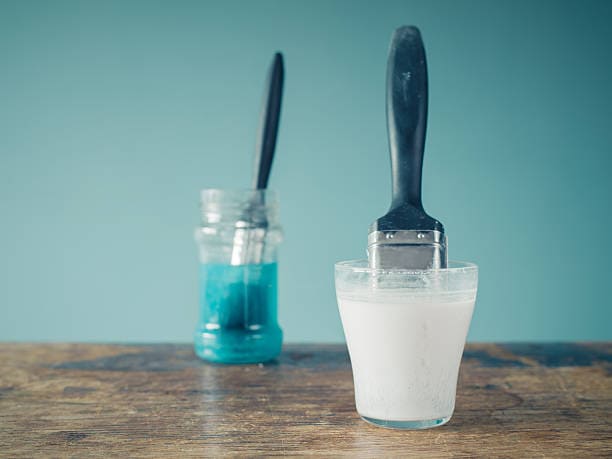
When cleaning a paintbrush, you will need to know what kind of paintbrush you’re cleaning. When cleaning a brush for oil paint, you’ll need to use a different method than if that same brush were used with acrylics. The reason behind this is simple: when using oil paints, the pigment adheres to the bristles in a way that makes it more challenging to clean out.
Oil brushes should be cleaned with turpentine and water (1:1 ratio). The process is similar to how one would treat any other type of surface stain; however, because these types of pigments tend not to wash off as quickly as others (i.e., they stick more tightly), you must ensure all traces are removed before discarding your used brush or storing it for future use.
Acrylics, on the other hand, are much easier to clean. This is because the pigments tend to be more water-soluble than oil paints. Acrylic brushes should be cleaned with warm water and soap (1:1 ratio).
You can also use a gentle dishwashing liquid if you are looking for an alternative.
How are you going to clean paintbrushes?
Use a brush cleaner. Brush cleaners are designed to remove paint residue, dried paint, and other stubborn dirt and grime from your brushes. They can also help keep them clean longer by preventing a microscopic buildup of dried pigment in the bristles that can hinder performance over time.
Use soap and water (or another mild detergent). If you’re not using a brush cleaner on your brushes, you should wash them occasionally with soap, water, or any other mild detergent. This will remove any buildup of residue that might affect the quality of your next painting session or make them smell bad!
Use alcohol if you’re cleaning oil-based paints from your brushes because it’s specifically designed for removing this type of pigment from surfaces—but be careful not to get any on yourself!
Use a paint thinner if you need something more substantial than plain old tap water; this solvent works similarly well as the commercial cleaners mentioned above but is less expensive due to being easily accessible at home improvement stores everywhere!
For more information on brush maintenance and cleaning, check out our articles below!
How to Clean Dirty Paint Brushes?
What supplies do you need to clean paintbrushes?
You will need the following:
Detergent. The type of detergent you use depends on the type of paint you are cleaning. If your brush has oil-based paint, it is best to use an oil-based detergent. For acrylic and water-soluble paints, dish soap works well.
Water. Make sure that your brushes are thoroughly soaked with water before getting started! If not, some of the dirt may remain on them instead of being rinsed off during cleaning due to a lack of moisture in the bristles themselves (you don’t want this). So make sure there’s enough sopping wetness until all excess grime has been removed from every bristle and shaft!
Brush cleaner or soap (optional). Rotate between using just soap and brush cleaner as needed; they serve different purposes, but both work well at removing stubborn debris from hard-to-reach places within each brush’s head and handle; when using both together, alternate between using one and then another after each rinse cycle finishes up.
Learn how to clean paintbrushes
The first step is to get rid of the excess paint. You may be able to do this by simply scrubbing the brush in hot water with a little bit of dish soap (don’t use a lot of it’ll soften your bristles). If you’re having trouble removing the paint, try using a brush cleaner specifically for oil paints. Fill a jar with water halfway, add some of your chosen cleaners, and place an old toothbrush on top so that its bristles are submerged in liquid. Set aside 24 hours so that everything has time to soak up some cleaning power from the chemicals. Please take out your brushes (be careful not to drop them!) and give them another good scrubbing before laying them flat on a paper towel or clean cloth so that any extra moisture can dry off completely before putting them away again safely!
If you need to clean more than one brush at once, set them side by side with the bristles facing up so they can dry more quickly.
Conclusion
We hope you have learned about the different types of paintbrushes by reading this article. Knowing what kind of paintbrush you should use for a smooth project finish.
In this article, we also introduced how to clean paintbrushes. With these tips, it should be easy for anyone to keep their brushes clean and ready for use. If anything is unclear or you have any other questions, feel free to send us a message!


